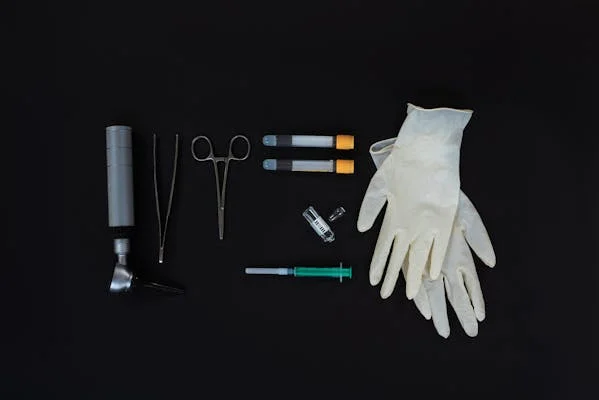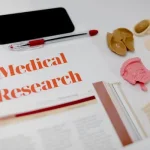Veterinary science has evolved significantly over the years, with advancements in technology enhancing diagnosis, treatment, and overall animal care. Whether working in a clinic, laboratory, or field, veterinarians rely on specialized tools to provide the best possible care. In this article, we explore the tools for vet science, their applications, and their importance in veterinary practice.
Essential Diagnostic Tools in Veterinary Science
1. Stethoscope
A stethoscope is a fundamental tool in veterinary diagnostics, allowing veterinarians to assess heart, lung, and gut sounds in animals. It helps detect abnormalities such as heart murmurs or respiratory issues.
2. Ultrasound Machine
Ultrasound imaging is crucial for examining internal organs, diagnosing pregnancies, and identifying tumors or cysts. It provides real-time images, aiding in accurate diagnosis.
3. X-ray Machine
Radiography is essential for diagnosing fractures, joint problems, and internal injuries. Modern digital X-ray machines offer high-resolution images, improving diagnostic accuracy.
4. Blood Analyzers
Hematology and biochemistry analyzers help veterinarians assess an animal’s overall health by measuring blood components such as red and white blood cells, glucose levels, and liver enzymes.
5. Endoscopy Equipment
Endoscopes allow veterinarians to examine the gastrointestinal and respiratory tracts non-invasively. This tool is particularly useful for diagnosing blockages, ulcers, and tumors.
Surgical Instruments for Veterinary Procedures
1. Scalpel and Surgical Blades
A scalpel is a key tool for making precise surgical incisions. Different blade types are used based on the procedure and animal size.
2. Surgical Scissors
Used for cutting tissues, sutures, and bandages, surgical scissors come in various shapes and sizes, including straight, curved, and serrated.
3. Forceps
Veterinary forceps are used for grasping tissues, holding sutures, and handling delicate structures during surgery.
4. Needle Holders
These instruments secure needles during suturing, ensuring precision and stability in wound closure.
5. Electrosurgical Units
Electrosurgical tools help cut tissue and coagulate blood vessels, reducing bleeding and improving surgical efficiency.
Laboratory and Research Tools in Vet Science
1. Microscope
A microscope is essential for examining parasites, bacteria, and cell structures in veterinary pathology and microbiology.
2. Centrifuge
Centrifuges are used to separate blood components for testing, helping in disease diagnosis and treatment planning.
3. PCR Machines
Polymerase Chain Reaction (PCR) machines assist in detecting genetic disorders, infections, and viruses in animals.
4. Autoclave
An autoclave is used for sterilizing surgical instruments and laboratory equipment, preventing infections and cross-contamination.
5. Incubator
Incubators help culture bacteria and viruses for diagnostic testing, playing a crucial role in veterinary microbiology.
Table: Summary of Veterinary Science Tools and Their Uses
| Tool | Category | Primary Use |
|---|---|---|
| Stethoscope | Diagnostic | Assess heart, lung, and gut sounds |
| Ultrasound Machine | Diagnostic | Imaging of internal organs |
| X-ray Machine | Diagnostic | Detect fractures and internal injuries |
| Blood Analyzer | Diagnostic | Blood composition analysis |
| Endoscope | Diagnostic | Internal examination of the digestive and respiratory tract |
| Scalpel | Surgical | Making precise incisions |
| Forceps | Surgical | Handling tissues and sutures |
| Microscope | Laboratory | Examining cells and bacteria |
| Centrifuge | Laboratory | Blood component separation |
| Autoclave | Laboratory | Sterilization of instruments |
Technological Advancements in Veterinary Science
1. Wearable Health Monitors
Wearable health monitors track vital signs such as heart rate, temperature, and activity levels in animals, providing real-time data to veterinarians.
2. AI-Based Diagnostic Tools
Artificial intelligence is being integrated into veterinary diagnostics, helping in early disease detection and treatment recommendations.
3. Telemedicine in Veterinary Practice
Telemedicine allows veterinarians to consult pet owners remotely, providing guidance on minor health concerns and follow-ups.
4. 3D Printing in Veterinary Medicine
3D printing is revolutionizing veterinary prosthetics, enabling customized solutions for injured animals.
5. CRISPR Technology in Genetic Research
CRISPR gene-editing technology is being explored for treating genetic disorders and improving animal breeding programs.
Conclusion
Veterinary science relies on a wide range of specialized tools to ensure the health and well-being of animals. From diagnostic equipment to advanced surgical instruments, the right tools improve accuracy, efficiency, and overall patient care. As technology continues to evolve, what new innovations will shape the future of veterinary science?
FAQs
1. What are the most commonly used tools in veterinary science?
Some of the most commonly used tools include stethoscopes, X-ray machines, ultrasound devices, blood analyzers, microscopes, and surgical instruments such as scalpels and forceps.
2. How has technology improved veterinary science?
Advancements in technology, such as AI-based diagnostics, wearable health monitors, and 3D printing, have enhanced diagnosis, treatment, and patient care in veterinary medicine tools for vet science.
3. Why is sterilization important in veterinary science?
Sterilization prevents infections and cross-contamination in veterinary clinics and laboratories, ensuring safe surgical and diagnostic procedures.
4. How do veterinarians diagnose diseases in animals?
Veterinarians use various diagnostic tools, including blood tests, X-rays, ultrasound imaging, endoscopes, and PCR machines, to accurately diagnose diseases in animals.
5. What is the future of veterinary science tools?
The future of veterinary science includes further integration of AI, telemedicine, CRISPR gene-editing, and advanced imaging technologies, improving accuracy and efficiency in animal healthcare.





